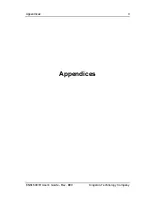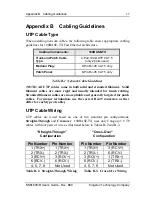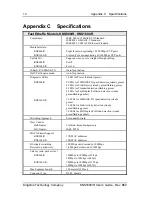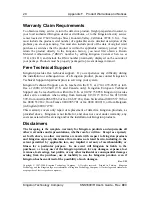
Appendix D Frequently Asked Questions
17
KNS1600/R User’s Guide - Rev. B00 Kingston Technology Company
Category 5 Compliance vs. Category 5 Performance?
Using CAT 5 cabling in your network installation does not necessarily achieve
full Category 5 performance. To achieve any category-rated performance, make
sure all cabling components, including modular plugs, trunk cables, and patch
panels, are at least of the minimum category required.
To achieve full CAT 5 performance, all components must be CAT 5 compliant
and terminated properly according to EIA/TIA-568 TSB-36 and TSB-40
guidelines.
What are the Guidelines for Proper Termination?
It is important to maintain the twists of the cable as close to the termination on
the outlet as possible, to avoid NEXT (Near End Cross Talk) and to maintain
the transmission characteristics of the Category. Category specifications require
that pair twisting, at the point of termination, not exceed the following
maximums:
•
Category 3 maximum allowed untwisting: 3 inches
•
Category 4 maximum allowed untwisting: 1 inch
•
Category 5 maximum allowed untwisting: 1/2 inch
Can I mix CAT 3 and CAT 5 cabling in the same building?
Yes, but keep in mind, you will not have CAT 5 performance. It is a good idea
to keep the lines separated, physically and by color, when installing any new
lines, use CAT 5 UTP cabling only.
Can a Four-Pair CAT 5 cable support two 100BASE-TX
devices?
Although only two pairs are used in the standard four-pair CAT 5 UTP cable, it
is not recommended because it exceeds the specifications outlined by IEEE
802.3u.





































